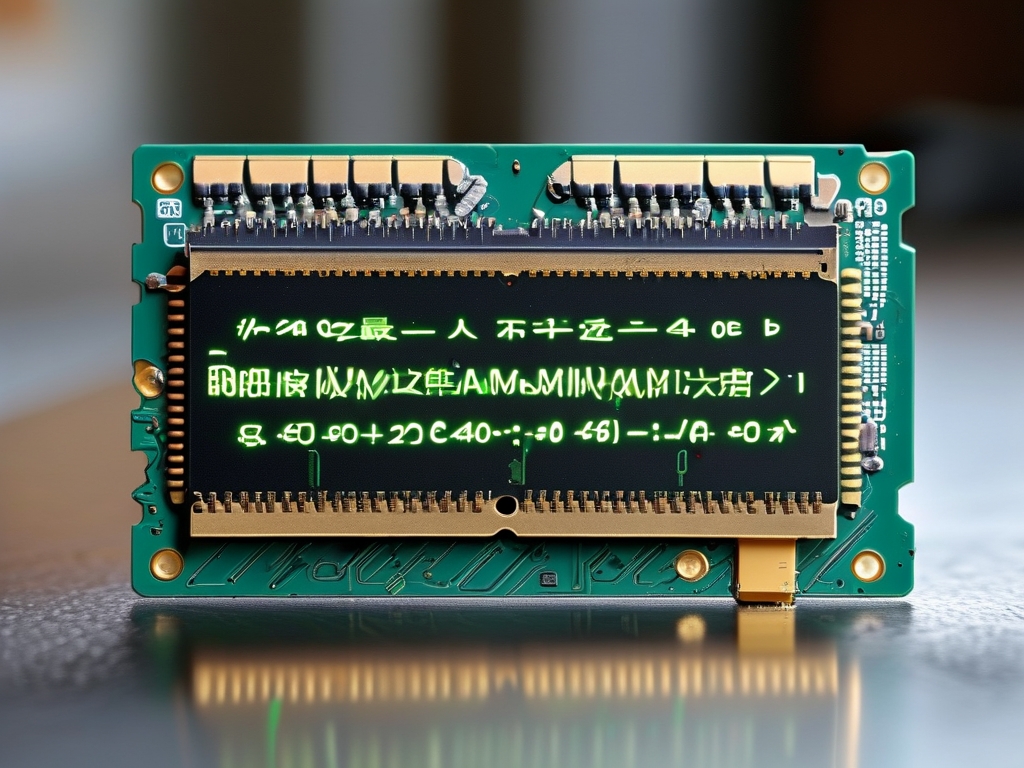Understanding how to calculate the maximum current value for memory modules is critical for hardware designers and system integrators. This parameter ensures stable operation, prevents overheating, and prolongs component lifespan. The formula itself combines electrical principles with practical design considerations, making it essential for optimizing memory performance in computing systems.

Core Formula Derivation
The maximum current draw of a memory module can be determined using Ohm's Law and power consumption data. The foundational equation is:
I_max = P_total / V Where:
- I_max = Maximum current (in amperes)
- P_total = Total power consumption of the memory module (in watts)
- V = Operating voltage (in volts)
For example, a DDR4 module rated at 1.2V with a power consumption of 3W would have:
I_max = 3W / 1.2V = 2.5A Key Variables in Practice
-
Power Consumption (P_total)
Memory manufacturers typically provide power ratings under standard operating conditions. However, real-world scenarios like overclocking or extended read/write cycles may increase this value by 15–30%. Always include a safety margin when calculating for critical applications. -
Voltage (V)
Modern memory modules operate at low voltages (e.g., 1.2V for DDR4, 1.1V for DDR5). Voltage regulation circuits may introduce minor fluctuations (±2–3%), so use measured values from a multimeter or power supply telemetry for precision. -
Parallel Modules
Systems with multiple memory sticks require aggregate calculations. For four identical DDR4 modules drawing 2.5A each, the total current demand becomes:I_total = 4 × 2.5A = 10A
Environmental Factors
Ambient temperature significantly impacts current requirements. A rule of thumb states that every 10°C rise above 25°C increases leakage current by 1.5–2x. For high-temperature environments (≥40°C), revise calculations using:
I_adj = I_max × [1 + (T_ambient - 25) × 0.15] Validation Techniques
-
Oscilloscope Measurement
Attach a current probe to the memory's power rail during peak operations (e.g., memory stress tests). Capture instantaneous spikes rather than relying on average readings. -
Thermal Analysis
Indirect validation via temperature monitoring:T_junction = (I_max² × R_thermal) + T_ambientWhere R_thermal is the thermal resistance from datasheets. Compare calculated and observed temperatures to verify current estimates.
Case Study: Overclocked DDR5
Consider a DDR5 module overclocked to 1.35V with a power draw of 4.8W:
I_max = 4.8W / 1.35V ≈ 3.56A Without proper cooling, this configuration could exceed thermal limits within minutes. Engineers must balance performance gains against current-handling capabilities of PCB traces and voltage regulators.
Design Implications
- Trace Width: Use IPC-2221 standards to determine minimum PCB trace widths for calculated currents. A 3A load at 1oz copper thickness requires ≈2mm trace width.
- Decoupling Capacitors: Place 100nF–10μF capacitors near memory pins to smooth current surges during rapid state changes.
- Voltage Regulator Modules (VRMs): Select VRMs with at least 20% headroom above calculated I_total to account for aging and load variations.
Common Pitfalls
- Ignoring transient spikes during memory initialization
- Using nominal voltages instead of worst-case measurements
- Overlooking shared power rails with other components
By mastering these calculations and validation methods, engineers can design robust systems that meet both performance targets and reliability standards. Always cross-reference theoretical results with empirical testing to account for real-world variables.

